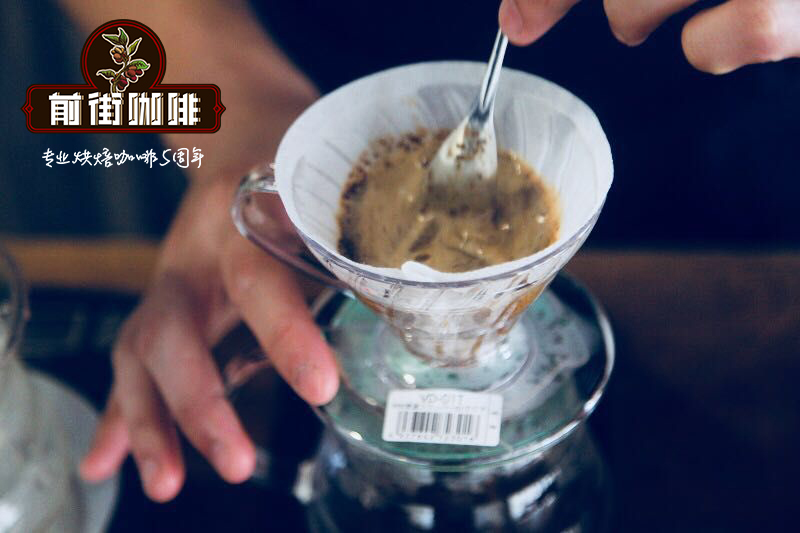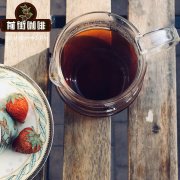How to soak mocha coffee powder? Yemeni mocha Coffee detailed practice tutorial brewing parameters

Professional coffee knowledge exchange more coffee bean information please follow the coffee workshop (Wechat official account cafe_style)
Yemeni coffee grows in steep terrain with little rainfall, poor land and insufficient sunshine. This unique and difficult condition is unfavorable to coffee growth, but it has given birth to the Yemeni mocha coffee that can not be replaced by the coffee world. The main producing areas of Yemeni coffee are Sanani, Matari and Ismaili.
Matali production area is located in the highlands to the west of the capital, at an altitude of 2000 to 2400 meters above sea level, which is the highest in Yemen, but it is the most remote and inconvenient transportation, which often takes some time for farmers to transport after harvest.
Treatment of mocha coffee beans
Ancient method of solarization
Yemen is a classic of the ancient morning taste of the sun, and it is also the only producer of full-time coffee in the world. the traditional treatment of dripping water is illegal. It has not changed since Europe became infatuated with game mocha coffee in the 17th century. This is related to the extremely dry climate in Shumen, where coffee is mainly grown in the central highlands, with an average annual rainfall of only 400 to 750 millimeters, much lower than the best rainfall of 1500 to 2000 millimeters in Arabica.
Due to the lack of water environment, farmers have been unable to introduce more advanced washing methods, wild flavor is better than Hara coffee, so Yemen has become the best choice to experience the ancient early taste.
The highlands of central Yemen are hilly and rugged. Most small farmers use the planting method of breaking up into parts. Several plants are planted on steep slopes and dozens of plants are planted on terraces or cliffs, each with different soil and water and micro-climate, so the fragrance composition is also different.
The sun treatment of Yemeni farmers is rougher than that of Ethiopia, and the coffee fruit is not picked until it dries on the branches and turns purple-black and falls to the ground to pick it up. This is different from the exquisite sun in which Ye Jia Xuefei or Sidamo picks red fruit and lays it on the "elevated net bed", which is the main reason for the heavy game in Yemen.
The natural sun treatment in Yemen is to manually harvest fully mature coffee beans and directly place the newly harvested coffee beans in a special coffee drying yard or in their own compacted soil front yard to receive the sun. During the sun drying period with Taiwan, rice is usually turned over with a wooden rake to keep each bean evenly dried. After about 20 days of coffee drying, remove the outer pulp and peel from the coffee beans. Yemeni coffee is rich in flavor. Complex, wild, mellow, strong fermented taste and low acidity, coupled with the fact that Yemeni coffee often contains an uncertain factor (when it rains in the season), it is not too much to call it the most special coffee in the world.
Analysis of raw beans of mocha coffee
Mocha coffee (Mocha) is rated as: Sunani Sanani
Important Notice :
前街咖啡 FrontStreet Coffee has moved to new addredd:
FrontStreet Coffee Address: 315,Donghua East Road,GuangZhou
Tel:020 38364473
- Prev

The origin of fancy mocha course illustration of the correct practice of fancy mocha
For more information on coffee beans, please follow the coffee workshop (Wechat official account cafe_style) [English name]: mocha Coffee [English name]: Mocha [material]: 30ml Italian concentrate, right amount of chocolate sauce, right amount of fresh cream, right amount of milk [preparation]: pour espresso and milk into the cup for 7 minutes, cream and sprinkle with chocolate.
- Next

Is mocha coffee black? How would you like your mocha? How many kinds of mocha do you have?
Professional coffee knowledge exchange more coffee bean information please follow the coffee workshop (Wechat official account cafe_style) mocha coffee is black coffee? A friend came to visit, made a pot of coffee, drank and talked. The friend asked, what kind of coffee is this? The aroma is mellow and the taste is rich. The answer was: this is Mocha. Eating out, accompanied by meals and drinks, a friend ordered a mocha. As a result
Related
- Detailed explanation of Jadeite planting Land in Panamanian Jadeite Manor introduction to the grading system of Jadeite competitive bidding, Red bid, Green bid and Rose Summer
- Story of Coffee planting in Brenka region of Costa Rica Stonehenge Manor anaerobic heavy honey treatment of flavor mouth
- What's on the barrel of Blue Mountain Coffee beans?
- Can American coffee also pull flowers? How to use hot American style to pull out a good-looking pattern?
- Can you make a cold extract with coffee beans? What is the right proportion for cold-extracted coffee formula?
- Indonesian PWN Gold Mandrine Coffee Origin Features Flavor How to Chong? Mandolin coffee is American.
- A brief introduction to the flavor characteristics of Brazilian yellow bourbon coffee beans
- What is the effect of different water quality on the flavor of cold-extracted coffee? What kind of water is best for brewing coffee?
- Why do you think of Rose Summer whenever you mention Panamanian coffee?
- Introduction to the characteristics of authentic blue mountain coffee bean producing areas? What is the CIB Coffee Authority in Jamaica?

